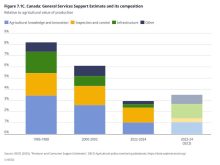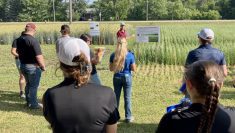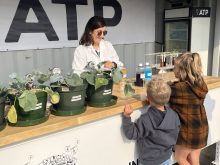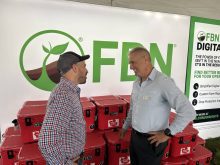A new-to-North-America wetland harvester could revolutionize the way wetlands are managed and provide cheap, sustainable fertilizer in the process, according to at least one watershed district that has tested the machine.
“It definitely has the potential to be a game-changer for wetland maintenance, drain maintenance and biomass harvesting,” said Redboine Watershed District manager Justin Reid.
Why it matters: New equipment could help overcome logistical issues that have stymied cattail biomass harvest and the fertilizer that can come from it.
Read Also
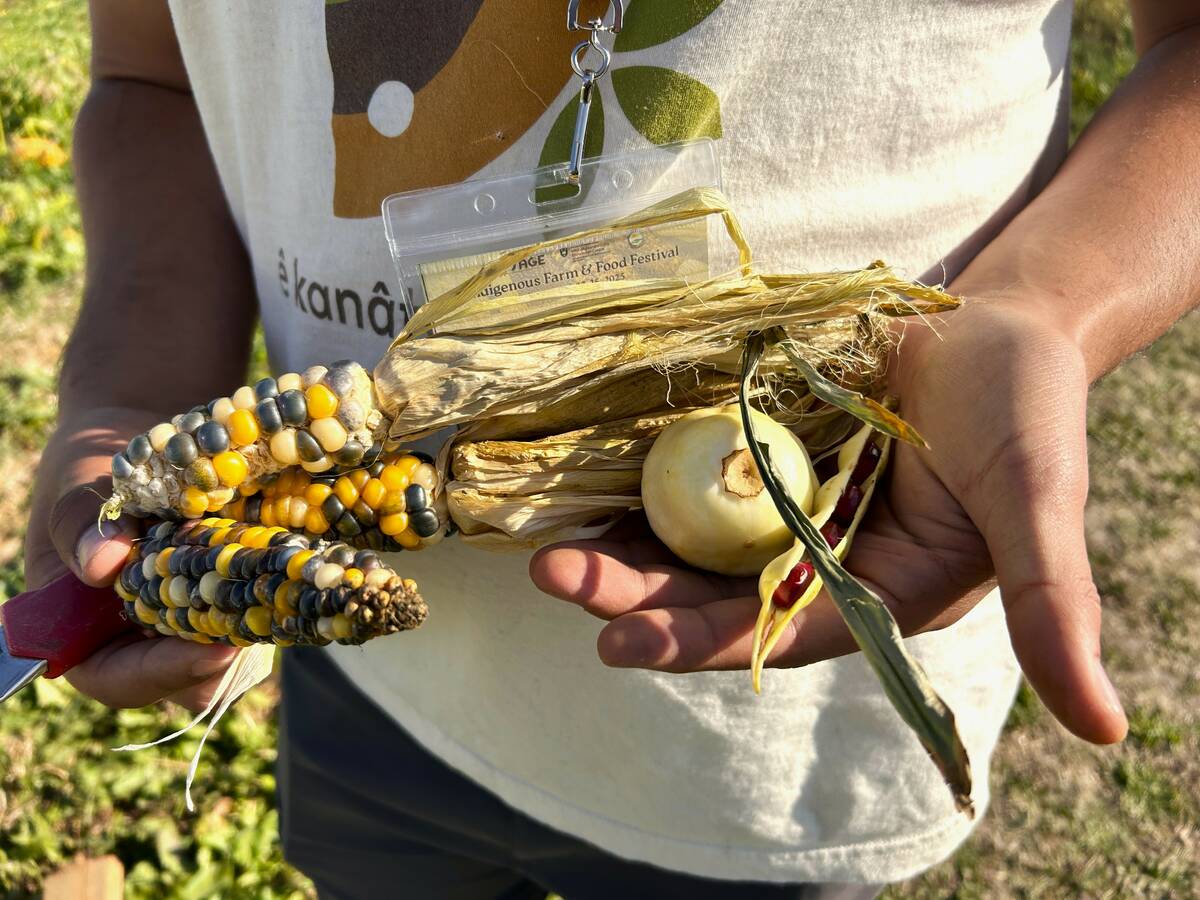
Regenerative practices meet Indigenous knowledge on the Prairies
What do traditional Indigenous agricultural practices and regenerative agriculture have in common? Quite a lot it turns out.
The Soft Track 140 Cut and Collect harvester, provided by Altona-based Komb Agricultural Services, was recently demonstrated at the district’s Pelly’s Lake project site near Holland, Man.

The site has drawn significant water management dollars for over a decade, culminating in a large-scale project that included dam infrastructure. That dam, which opened its gates in 2015, was designed to hold back water in spring. It would then be released later in the season, allowing hay harvest by fall.
Slowing water during the spring melt limits local flood risk and allows for later-season recharge downstream. From a conservation point of view, the project enhanced wildlife habitat and provided a sink for phosphorus, allowing time for the nutrient to be taken up by the thick cattails at the water’s edge.
Biomass harvest on the site started in 2012.
Research through the International Institute of Sustainable Development (IISD) at the time estimated that the cattails could capture 20-60 kilograms of phosphorus per hectare.
Once harvested, the biomass can be burned for heat and the resulting ash, which retains its phosphorus, can be spread on croplands as fertilizer. The biomass could also be used as livestock bedding and, when mixed with manure, can be composted and applied on land.
“Cattails are excellent filters,” said Reid. “Essentially, the phosphorus is taken up by the plants, and then you take the plants out of the system.”
A number of farmers signed agreements for their land to be used in the 630-acre project.
The IISD, along with the Prairie Agricultural Machinery Institute, continued to investigate ways to harvest and use Pelly’s Lake cattails, although the work previously focused on using equipment farmers already had on hand.
Leading the way
The project, and the wetland harvester demonstrated this year, gained attention south of the U.S.-Canada border.
Earlier this fall, the Redboine Watershed District hosted a site tour for North Dakotan wetland ecologists, who are planning their own biomass harvest site similar to Pelly’s Lake.
The harvester is “a piece of equipment that we’ve been dreaming about for well over a decade,” said Richard Grosshans, bio-remediation lead for IISD’s water program.

The institute has always hoped to use Pelly’s Lake as proof of concept that wetland harvesting could be done with easily rentable local equipment so that watershed districts, municipalities and farmers could do it themselves. However, standard swathers and balers could only get on the land roughly once every three years.
“At the same time, we had partners in Germany and the Netherlands who were using those tracked harvesters, and they were able to access their areas all the time,” said Grosshans.
“We were always hoping to bring something like that to Manitoba, but we were more interested in proving the concept, hoping someone would take up the torch.”
Marlon Bergen, owner of Komb Agricultural Services, was that someone.
Bergen started his firm as a water management business, doing surface drainage, ditch management, aerial surveying and drain tile. He found a persistent challenge in trying to cut and collect vegetation from difficult-to-access waterways.
“I started to develop my own [machine],” he said. “I started doing some design and started working with drafters instead of looking around the world to find what is out there.”
That effort led to a building phase, when Bergen attended a presentation from Grosshans and first heard of the Soft Track 140, built by U.K.-based Log Logic.
Bergen’s strategy turned around. Rather than shouldering the research and development cost of building a unit, he ordered one of the U.K. company’s machines. That was about four years ago.
“It took nearly two and a half years to get the unit into my hands,” Bergen said. “I went to pick it up last December from Falken Equipment out of Ogden, Illinois.”
This spring, he put the unit to work in demonstrations like the one at Pelly’s Lake.
“This year, I wasn’t looking at really being profitable,” he said. “I’ve had a number of years to build the case with municipalities, watershed districts and private entities but, obviously, having the unit in the field was key.”
The result of the Redboine Watershed District demonstration impressed attendees. The wetland harvester is a “go-anywhere, do-anything type of machinery,” Reid said.
Added Grosshans, “it’s literally game-changing to finally have a piece of equipment like that here in Manitoba.”
He said the IISD has been using this type of equipment for well over a decade in Europe.
“They can customize it with different harvesting heads on it and they use it for all kinds of stuff in Europe. They’ve adapted it to work with a cold, wet agriculture with very rich, soft soils,” he said.
While the equipment is common in Europe for habitat and biodiversity recovery, the phosphorus angle comes from Canada.
“They hadn’t thought about that,” said Grosshans. “They were doing it for the habitat and the biomass, and we were doing it for the phosphorus and the biomass, and we connected our story and narrative together, showing all the benefits that can be had from this type of management.”




